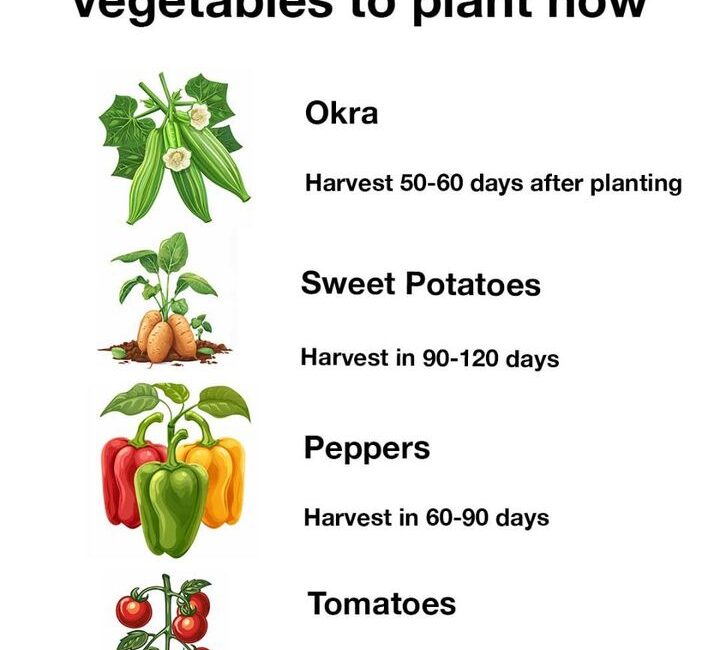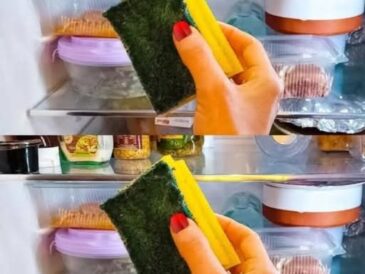When to Plant:
Plant sweet potatoes in late spring or early summer when the soil temperature reaches 70°F (21°C) or higher. Sweet potatoes require at least 4 months of warm weather to mature, so it’s important to plant them early enough in the season.
When to Harvest:
Sweet potatoes are typically ready to harvest 90 to 150 days after planting, depending on the variety. The leaves will begin to yellow and die back when the tubers are ready. Carefully dig around the plant to harvest the sweet potatoes, being careful not to damage the tubers.
Tips for Growing:
- Sweet potatoes prefer loose, well-drained soil with a slightly acidic pH (5.5 to 6.5).
- Provide full sun for at least 6 to 8 hours per day.
- Keep the soil consistently moist but not soggy, especially during the growing season.
- After harvesting, cure sweet potatoes in a warm, dry place for 10 to 14 days to enhance their flavor and storage life.
6. Zucchini (Cucurbita pepo)
Zucchini, a member of the squash family, is an excellent vegetable for growing in hot climates. It thrives in the heat, producing a continuous supply of tender, flavorful fruit throughout the summer. Zucchini is a fast-growing vegetable, making it an excellent choice for gardeners looking to get quick results.
When to Plant:
Plant zucchini seeds directly in the ground in late spring, once the soil has warmed to at least 60°F (15°C). Zucchini can also be started indoors a few weeks before the last frost and transplanted once the danger of frost has passed.
When to Harvest:
Zucchini is typically ready to harvest 40 to 60 days after planting. Harvest when the fruit is about 6 to 8 inches long. If left on the plant too long, zucchinis can become overgrown and tough. Pick zucchinis regularly to encourage continuous fruit production.
Tips for Growing:
- Zucchini prefers well-drained, fertile soil with a pH of 6.0 to 7.5.
- Water regularly, but avoid wetting the leaves to reduce the risk of fungal diseases.
- Space plants at least 18 inches apart to give them room to spread.
- Apply mulch around the plants to retain moisture and keep the soil cool.
7. Beans (Phaseolus vulgaris)
Beans are another heat-tolerant vegetable that thrives in the summer heat. Both bush and pole beans are excellent choices for hot weather, as they grow quickly and require minimal maintenance. Beans are also nitrogen-fixing plants, which means they can help improve the soil quality in your garden.
When to Plant:
Plant beans directly in the ground in late spring or early summer, once the soil temperature is consistently above 60°F (15°C). Beans grow best in warm weather and can be sown directly into the garden after the last frost.
When to Harvest:
Beans are typically ready to harvest 50 to 70 days after planting, depending on the variety. For
green beans, harvest when the pods are young and tender. For dried beans, allow the pods to mature and dry on the plant before harvesting.
Tips for Growing:
- Beans thrive in well-drained soil with a pH of 6.0 to 7.0.
- Water regularly, but avoid overwatering, as beans do not tolerate soggy soil.
- Support pole beans with trellises or stakes to encourage vertical growth.
- Fertilize lightly, as beans can fix their nitrogen needs in the soil.
8. Cucumbers (Cucumis sativus)
Cucumbers are another vegetable that does well in hot weather. They require plenty of sunlight and warm temperatures to produce large, crisp fruits. There are many cucumber varieties available, from slicing cucumbers to pickling types, all of which thrive in hot climates.
When to Plant:
Plant cucumbers after the last frost date when the soil temperature is consistently above 60°F (15°C). You can direct sow cucumber seeds into the garden or start them indoors a few weeks before the last frost.
When to Harvest:
Cucumbers are typically ready to harvest 50 to 70 days after planting. Harvest cucumbers when they are firm, smooth, and green, before they become overripe and bitter. For slicing cucumbers, pick when they are about 6 to 8 inches long.
Tips for Growing:
- Cucumbers need full sun and well-drained, fertile soil.
- Water deeply and consistently to prevent the fruits from becoming bitter.
- Mulch around the base of the plants to help retain moisture and regulate soil temperature.
- Provide trellises or supports for vining varieties to save space and keep the fruit clean.
9. Lima Beans (Phaseolus lunatus)
Lima beans are heat-tolerant legumes that thrive in warm, sunny conditions. They are easy to grow and require minimal care, making them a perfect addition to any garden. Lima beans come in two main varieties: bush and pole types, which can be chosen based on available space and gardening preferences.
When to Plant:
Plant lima beans after the last frost date when the soil temperature reaches at least 60°F (15°C). They require a long growing season and should be sown directly in the garden.
When to Harvest:
Lima beans are typically ready to harvest 70 to 90 days after planting, depending on the variety. For fresh beans, harvest when the pods are plump and green. For dried beans, allow the pods to mature and dry on the vine.
Tips for Growing:
- Lima beans prefer well-drained, loamy soil with a pH of 6.0 to 7.5.
- Provide full sun for at least 6 to 8 hours per day.
- Space plants 12 to 18 inches apart for bush varieties and 18 to 24 inches apart for pole types.
- Keep the soil consistently moist but well-drained.
10. Corn (Zea mays)
Corn is a classic summer crop that thrives in hot weather. It requires full sun, well-drained soil, and plenty of water to produce tall, strong plants with sweet, tender ears of corn. Corn is best grown in blocks rather than single rows to promote better pollination.
When to Plant:
Plant corn directly in the garden once the soil temperature has reached at least 60°F (15°C). Corn requires a long growing season, so it should be planted early in the summer for a late-summer harvest.
When to Harvest:
Corn is ready to harvest about 60 to 100 days after planting, depending on the variety. The ears should be full and plump, and the husks should be green and tight. Test for ripeness by pulling back a husk and piercing a kernel with a fingernail – if the liquid is milky, the corn is ready to pick.
Tips for Growing:
- Corn requires well-drained, fertile soil with a pH of 5.8 to 7.0.
- Water regularly, particularly during the flowering and ear-filling stages.
- Plant corn in blocks (at least three rows) for better pollination.
- Consider using organic mulch to keep the soil cool and moist.
These heat-tolerant vegetables are all well-suited to hot weather and can provide a bountiful harvest even in the height of summer. By selecting the right varieties, caring for them properly, and harvesting at the right time, you can enjoy fresh and delicious produce all season long. Whether you’re looking for vegetables to grow in the heat of the summer or you’re preparing your garden for the coming heatwaves, these plants are sure to thrive in even the hottest conditions.




